-
 Bitcoin
Bitcoin $105,678.5433
3.97% -
 Ethereum
Ethereum $2,438.0085
7.47% -
 Tether USDt
Tether USDt $1.0005
0.00% -
 XRP
XRP $2.1913
8.48% -
 BNB
BNB $640.8349
3.02% -
 Solana
Solana $144.5565
7.67% -
 USDC
USDC $1.0000
0.00% -
 TRON
TRON $0.2728
0.43% -
 Dogecoin
Dogecoin $0.1638
6.23% -
 Cardano
Cardano $0.5855
6.90% -
 Hyperliquid
Hyperliquid $38.1165
9.12% -
 Sui
Sui $2.7823
11.35% -
 Bitcoin Cash
Bitcoin Cash $453.8805
2.07% -
 Chainlink
Chainlink $13.3114
12.02% -
 UNUS SED LEO
UNUS SED LEO $9.1448
0.95% -
 Stellar
Stellar $0.2484
7.25% -
 Avalanche
Avalanche $18.1889
7.53% -
 Toncoin
Toncoin $2.9059
3.39% -
 Shiba Inu
Shiba Inu $0.0...01164
5.99% -
 Hedera
Hedera $0.1520
9.43% -
 Litecoin
Litecoin $84.3123
3.09% -
 Monero
Monero $312.6435
3.72% -
 Ethena USDe
Ethena USDe $1.0006
0.01% -
 Polkadot
Polkadot $3.4586
6.41% -
 Dai
Dai $0.9999
-0.03% -
 Bitget Token
Bitget Token $4.2689
5.09% -
 Uniswap
Uniswap $6.9291
11.61% -
 Pepe
Pepe $0.0...09961
9.42% -
 Pi
Pi $0.5373
6.24% -
 Aave
Aave $261.4523
12.42%
What does the KDJ indicator three-line golden cross mean?
A KDJ three-line golden cross signals a strong bullish reversal in crypto trading, especially when confirmed by volume and aligning with key support levels.
Jun 24, 2025 at 05:28 pm
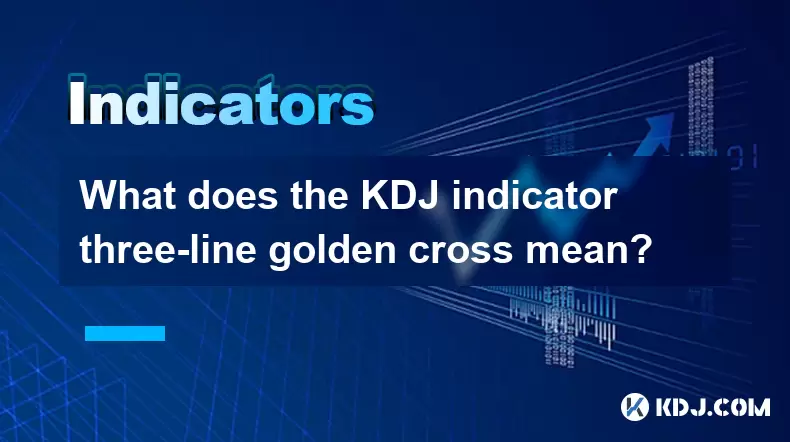
Understanding the KDJ Indicator in Cryptocurrency Trading
The KDJ indicator is a technical analysis tool widely used in cryptocurrency trading to identify potential buy and sell signals. It combines elements of two other indicators: the Stochastic Oscillator and the J line, which acts as a signal line. The KDJ consists of three lines — K, D, and J — each representing different aspects of market momentum.
In the volatile world of crypto assets, traders rely heavily on such indicators to make informed decisions. The KDJ indicator helps assess overbought or oversold conditions and provides insights into trend reversals or continuations.
What Is a Three-Line Golden Cross in the KDJ Indicator?
A three-line golden cross in the KDJ indicator occurs when the K line crosses above the D line, and both lines are below the J line, typically rising from the oversold region (below 20). This formation suggests a strong bullish reversal may be imminent.
- The K line reflects short-term price momentum.
- The D line serves as a signal line for the K line.
- The J line indicates the divergence between the K and D lines.
When all three lines align in this specific pattern, especially in the lower range of the indicator, it signals a potentially powerful upward movement in price.
How to Identify the Golden Cross in KDJ on a Crypto Chart
To spot a three-line golden cross on a chart:
- Look for the K line crossing above the D line in the lower portion of the KDJ window.
- Ensure that the J line is also above both K and D, forming a stacked structure.
- Confirm that the values are below 20, indicating an oversold condition.
- Check if this crossover happens after a sustained downtrend, increasing the likelihood of a reversal.
This configuration is more reliable when it coincides with increased volume or positive news affecting the particular cryptocurrency being analyzed.
Interpreting the Golden Cross Signal in Crypto Markets
Cryptocurrency markets are highly reactive to technical signals due to their speculative nature and high volatility. A KDJ three-line golden cross can serve as a timely entry point for traders aiming to catch a new uptrend.
However, due to frequent false signals in fast-moving markets:
- Always wait for confirmation from the next candlestick after the cross occurs.
- Use additional tools like moving averages or RSI to filter out noise.
- Monitor volume spikes during the cross to confirm buying pressure.
Traders should also consider the timeframe they're analyzing; a golden cross on a daily chart carries more weight than one on a 15-minute chart.
Executing a Trade Based on the KDJ Golden Cross Signal
If you decide to trade based on the KDJ three-line golden cross, follow these steps carefully:
- Set up your charting platform (like TradingView or Binance's native tools) with the KDJ indicator enabled.
- Switch to the preferred time frame (daily or 4-hour for swing trading).
- Wait for the K line to rise above the D line, with both under 20, and J above them.
- Confirm that the crossover occurs near key support levels or after a significant pullback.
- Place a buy order once the next candle closes above the cross candle’s high.
- Set a stop-loss just below the recent low before the cross occurred.
- Target resistance levels or use a trailing stop to maximize gains.
Avoid rushing into trades solely based on this signal without confirming factors like volume or broader market sentiment.
Common Mistakes When Using the KDJ Golden Cross in Crypto Trading
Many novice traders fall into traps when interpreting the KDJ golden cross:
- Acting on every cross without considering the market context.
- Ignoring divergence signals where price moves opposite to the KDJ lines.
- Failing to combine KDJ with other confirming indicators.
- Not adjusting settings for different cryptocurrencies — some altcoins may require customized KDJ parameters.
These errors often lead to premature entries or losses during fakeouts or sideways consolidation phases.
Frequently Asked Questions
Q: Can the KDJ indicator be used on all cryptocurrencies?
Yes, the KDJ indicator can be applied to any cryptocurrency chart. However, its effectiveness may vary depending on the asset's liquidity and volatility.
Q: What is the default setting for the KDJ indicator in most platforms?
Most platforms use a 9-period lookback with smoothing factors of 3 for K and D. The J line is usually calculated as 3K - 2D.
Q: How does the KDJ differ from the RSI in crypto trading?
While both measure momentum, the KDJ focuses on price velocity and crossovers, whereas the RSI highlights overbought/oversold extremes through a single line.
Q: Should I adjust KDJ settings for intraday crypto trading?
Some traders modify the period to shorter lengths like 5 or 7 for faster signals in intraday setups, but this increases the risk of false signals.
Disclaimer:info@kdj.com
The information provided is not trading advice. kdj.com does not assume any responsibility for any investments made based on the information provided in this article. Cryptocurrencies are highly volatile and it is highly recommended that you invest with caution after thorough research!
If you believe that the content used on this website infringes your copyright, please contact us immediately (info@kdj.com) and we will delete it promptly.
- Polymarket Eyes $1B Valuation: Betting Big on Prediction Markets
- 2025-06-24 22:45:13
- Kane Brown and Taylor Lautner: From Real-Life Friends to 'The Token Groomsman'
- 2025-06-24 22:45:13
- Fartcoin, Bitcoin, and Wealth Creation: A New Era of Crypto?
- 2025-06-24 23:05:12
- Sami Sheen's Breast Implant Removal: A Health-First Decision
- 2025-06-24 22:25:12
- BlockDAG's Token Campaign and Pre-Mainnet Growth Attracts Attention
- 2025-06-24 23:45:12
- AERO Eyes: Investor Buy and Whale Accumulation Signals Rally?
- 2025-06-24 23:30:12
Related knowledge

What does it mean that the ATR indicator suddenly doubles after hitting a new low this year?
Jun 24,2025 at 11:57pm
Understanding the ATR IndicatorThe Average True Range (ATR) is a technical analysis indicator used to measure market volatility. Developed by J. Welles Wilder, ATR calculates the average price range between a security’s high and low over a specific period—typically 14 periods. It does not indicate the direction of price movement but rather how volatile ...
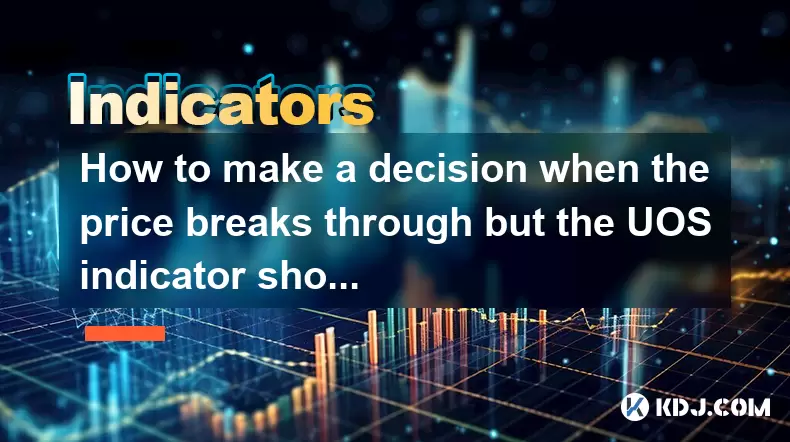
How to make a decision when the price breaks through but the UOS indicator shows a top divergence?
Jun 24,2025 at 11:42pm
Understanding the UOS Indicator and Price BreakthroughsThe Ultimate Oscillator (UOS) is a momentum oscillator that combines multiple timeframes to provide a more accurate picture of market momentum. When traders observe a price breakthrough — where the price moves above a key resistance level — but the UOS indicator shows a top divergence, it creates a ...

How to judge that the price breaks through the cloud but the hysteresis line has not turned?
Jun 24,2025 at 10:43pm
Understanding the Ichimoku Cloud and Its ComponentsIn technical analysis, the Ichimoku Cloud, also known as the Ichimoku Kinko Hyo, is a powerful tool used by traders to gauge momentum, trend direction, and potential support or resistance levels. The cloud itself is composed of multiple lines: Tenkan-sen (conversion line), Kijun-sen (base line), Senkou ...
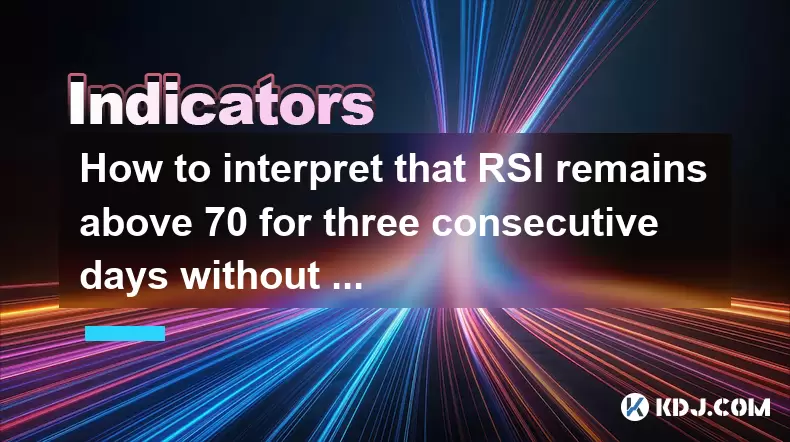
How to interpret that RSI remains above 70 for three consecutive days without falling back?
Jun 24,2025 at 11:14pm
Understanding the RSI Indicator in Cryptocurrency TradingThe Relative Strength Index (RSI) is a momentum oscillator used to measure the speed and change of price movements. Typically, it ranges from 0 to 100 and is widely used by traders to identify overbought or oversold conditions in an asset. In cryptocurrency trading, where volatility is high and tr...
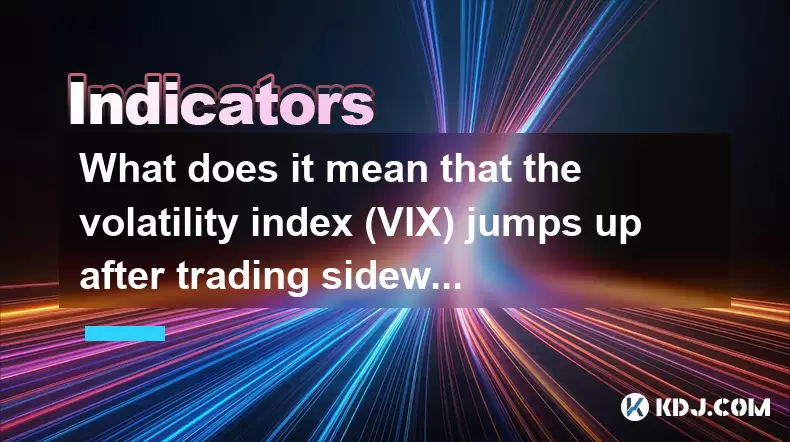
What does it mean that the volatility index (VIX) jumps up after trading sideways at a low level?
Jun 24,2025 at 09:35pm
Understanding the Volatility Index (VIX)The Volatility Index (VIX), often referred to as the 'fear gauge,' is a real-time market index that represents the market's expectation of 30-day forward-looking volatility. It is calculated by the Chicago Board Options Exchange (CBOE) based on the price inputs of S&P 500 index options. In the context of cryptocur...
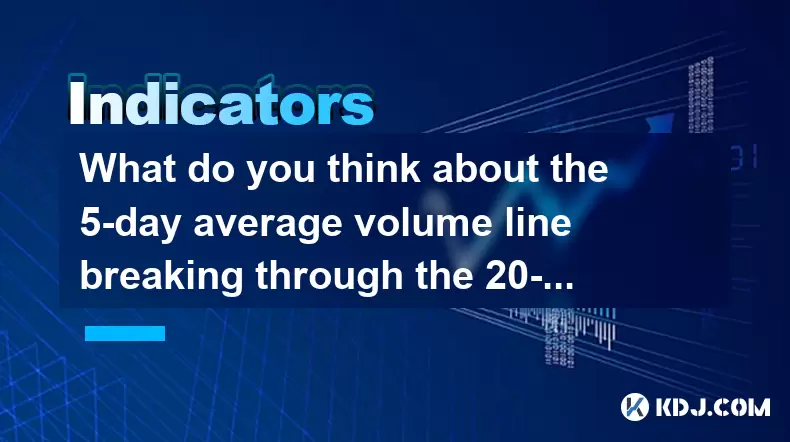
What do you think about the 5-day average volume line breaking through the 20-day average volume line but the price is stagnant?
Jun 24,2025 at 11:50pm
Understanding Volume Indicators in Cryptocurrency TradingIn cryptocurrency trading, volume is one of the most crucial indicators that traders rely on to gauge market sentiment and potential price movements. Volume represents the total number of assets traded over a specific period, and when analyzed using moving averages like the 5-day and 20-day volume...

What does it mean that the ATR indicator suddenly doubles after hitting a new low this year?
Jun 24,2025 at 11:57pm
Understanding the ATR IndicatorThe Average True Range (ATR) is a technical analysis indicator used to measure market volatility. Developed by J. Welles Wilder, ATR calculates the average price range between a security’s high and low over a specific period—typically 14 periods. It does not indicate the direction of price movement but rather how volatile ...

How to make a decision when the price breaks through but the UOS indicator shows a top divergence?
Jun 24,2025 at 11:42pm
Understanding the UOS Indicator and Price BreakthroughsThe Ultimate Oscillator (UOS) is a momentum oscillator that combines multiple timeframes to provide a more accurate picture of market momentum. When traders observe a price breakthrough — where the price moves above a key resistance level — but the UOS indicator shows a top divergence, it creates a ...

How to judge that the price breaks through the cloud but the hysteresis line has not turned?
Jun 24,2025 at 10:43pm
Understanding the Ichimoku Cloud and Its ComponentsIn technical analysis, the Ichimoku Cloud, also known as the Ichimoku Kinko Hyo, is a powerful tool used by traders to gauge momentum, trend direction, and potential support or resistance levels. The cloud itself is composed of multiple lines: Tenkan-sen (conversion line), Kijun-sen (base line), Senkou ...

How to interpret that RSI remains above 70 for three consecutive days without falling back?
Jun 24,2025 at 11:14pm
Understanding the RSI Indicator in Cryptocurrency TradingThe Relative Strength Index (RSI) is a momentum oscillator used to measure the speed and change of price movements. Typically, it ranges from 0 to 100 and is widely used by traders to identify overbought or oversold conditions in an asset. In cryptocurrency trading, where volatility is high and tr...

What does it mean that the volatility index (VIX) jumps up after trading sideways at a low level?
Jun 24,2025 at 09:35pm
Understanding the Volatility Index (VIX)The Volatility Index (VIX), often referred to as the 'fear gauge,' is a real-time market index that represents the market's expectation of 30-day forward-looking volatility. It is calculated by the Chicago Board Options Exchange (CBOE) based on the price inputs of S&P 500 index options. In the context of cryptocur...

What do you think about the 5-day average volume line breaking through the 20-day average volume line but the price is stagnant?
Jun 24,2025 at 11:50pm
Understanding Volume Indicators in Cryptocurrency TradingIn cryptocurrency trading, volume is one of the most crucial indicators that traders rely on to gauge market sentiment and potential price movements. Volume represents the total number of assets traded over a specific period, and when analyzed using moving averages like the 5-day and 20-day volume...
See all articles
























































































